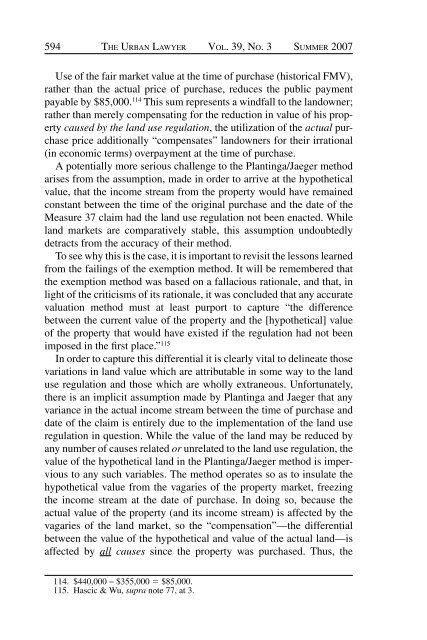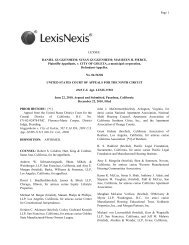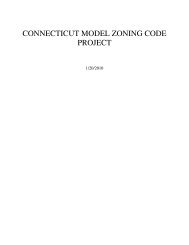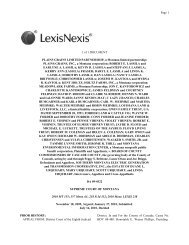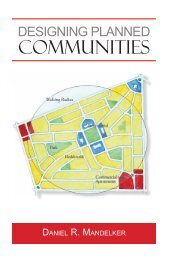Through a Glass Darkly: Measuring Loss Under ... - Land Use Law
Through a Glass Darkly: Measuring Loss Under ... - Land Use Law
Through a Glass Darkly: Measuring Loss Under ... - Land Use Law
Create successful ePaper yourself
Turn your PDF publications into a flip-book with our unique Google optimized e-Paper software.
594 THE URBAN LAWYER VOL. 39, NO. 3 SUMMER 2007<br />
<strong>Use</strong> of the fair market value at the time of purchase (historical FMV),<br />
rather than the actual price of purchase, reduces the public payment<br />
payable by $85,000. 114 This sum represents a windfall to the landowner;<br />
rather than merely compensating for the reduction in value of his property<br />
caused by the land use regulation, the utilization of the actual purchase<br />
price additionally “compensates” landowners for their irrational<br />
(in economic terms) overpayment at the time of purchase.<br />
A potentially more serious challenge to the Plantinga/Jaeger method<br />
arises from the assumption, made in order to arrive at the hypothetical<br />
value, that the income stream from the property would have remained<br />
constant between the time of the original purchase and the date of the<br />
Measure 37 claim had the land use regulation not been enacted. While<br />
land markets are comparatively stable, this assumption undoubtedly<br />
detracts from the accuracy of their method.<br />
To see why this is the case, it is important to revisit the lessons learned<br />
from the failings of the exemption method. It will be remembered that<br />
the exemption method was based on a fallacious rationale, and that, in<br />
light of the criticisms of its rationale, it was concluded that any accurate<br />
valuation method must at least purport to capture “the difference<br />
between the current value of the property and the [hypothetical] value<br />
of the property that would have existed if the regulation had not been<br />
imposed in the first place.” 115<br />
In order to capture this differential it is clearly vital to delineate those<br />
variations in land value which are attributable in some way to the land<br />
use regulation and those which are wholly extraneous. Unfortunately,<br />
there is an implicit assumption made by Plantinga and Jaeger that any<br />
variance in the actual income stream between the time of purchase and<br />
date of the claim is entirely due to the implementation of the land use<br />
regulation in question. While the value of the land may be reduced by<br />
any number of causes related or unrelated to the land use regulation, the<br />
value of the hypothetical land in the Plantinga/Jaeger method is impervious<br />
to any such variables. The method operates so as to insulate the<br />
hypothetical value from the vagaries of the property market, freezing<br />
the income stream at the date of purchase. In doing so, because the<br />
actual value of the property (and its income stream) is affected by the<br />
vagaries of the land market, so the “compensation”—the differential<br />
between the value of the hypothetical and value of the actual land—is<br />
affected by all causes since the property was purchased. Thus, the<br />
114. $440,000 − $355,000 $85,000.<br />
115. Hascic & Wu, supra note 77, at 3.<br />
ABA-TUL-07-0701-Sullivan.indd 594<br />
9/18/07 10:43:42 AM


